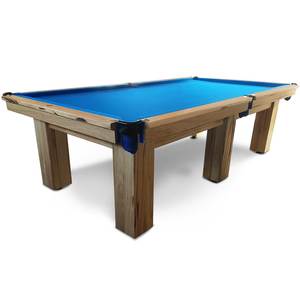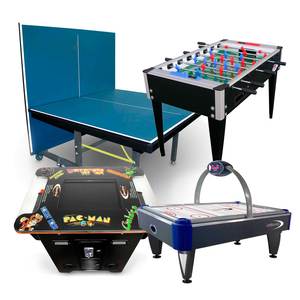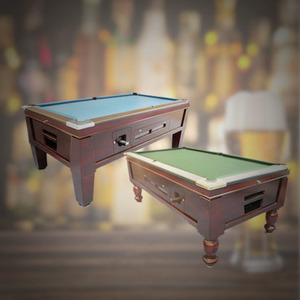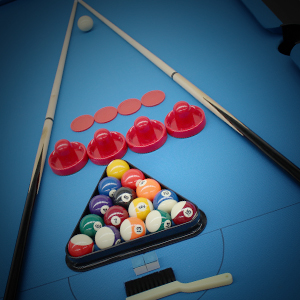How is a Pool Table Made?
Date Posted:26 October 2016
what’s the difference between Pool, billiards and snooker?
26th October 2016
Pool tables are wonderful pieces of craftsmanship and high-quality tables require the best quality materials and professional workmanship. Here is how a pool table is made:
The Surface
Whether the table is designed for pool or snooker, the playing surface is traditionally made using a large slate slab. Slate is a large rock that naturally splits into flat segments. Slate’s ability to be flattened and polished into smooth equal surfaces has made it the best choice of material for pool tables.
As a sedimentary rock, slate forms all over the world. However, the highest quality pool table slates come predominantly from Brazil and Italy.
The Cabinet
To make the cabinet, you start with a large rectangular wooden frame made out of hardwood. The best frames are made using Victorian Ash, Tasmanian Oak, Tasmanian Blackwood, American Oak, and West Australian Jarrah.
Depending on the size of the table, a number of crossbeams are employed along with a centre beam to support the slate. These are connected to each of the corners with either metal brackets or wooden blocks. These interlocking beams support the slate to form the frame.
Tables range from having four, six, or eight legs. Some more modern table styles use a large base instead of legs. Depending on the quality of table, or the design preference, the legs can stretch all the way up to the base of the slate or they can reach just to the bottom of the frame.
Collection Chambers
Commercial tables, such as coin-operated tables, use a system of chutes so that pocketed balls can be collected or held.
This means that a system of chutes needs to connect to each of the six pockets. Using gravity, these chutes send the balls internally around the edge of the frame to a single collection point. When a player inserts the right coin into the slot, a lever is pulled that releases the balls from the collection area, into an open trough so that they can be picked up and placed on the table.
The Rails
The rails are the boundary of the playing surface. Rails are normally made from wood, usually the same wood as used for the frame. Between the hardwood rail and the slate surface is a piece of softer wood that receives the cloth via strong staples.
Before the cloth is stapled into place, it is stretched over the cushion that rests glued to the side of the rail that faces the playing surface. The cushions are covered with the same felt cloth and allow the balls to easily and consistently rebound around the table.
The Cloth
The cloth used on traditional tables is made out of wool or a blended fibre cloth in the case of American style tables. The cloth ensures a smooth and consistent surface. Whilst the traditional colour is green, modern tables can come in any number of coloured cloths.
Now that you know how it’s made, isn’t it time to pick up your new pool table? Talk to your nearest pool/billiards/snooker specialists and explore our complete range. Call us in Sydney on (02) 9153 8838 or Melbourne on (03) 9553 1418.






